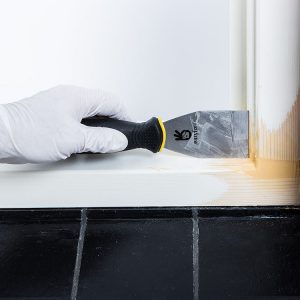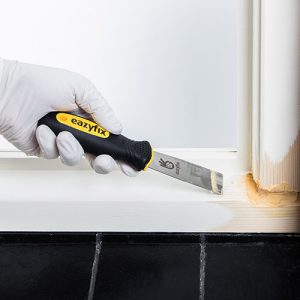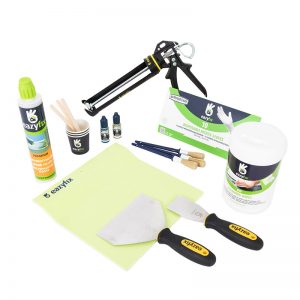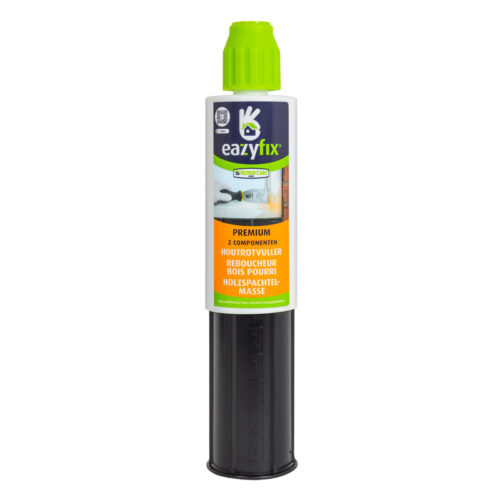Wood rot is an attack on the timber caused by fungi. On the outside, especially with painted timber, you often don’t really notice that the wood is affected. This makes it important that you regularly check your timber for possible damage. In this blog we explain what the characteristics of wood rot are and how you identify it yourself.
Where does wood rot arise?
Places where wood rot is easily formed are mainly in the open air. This timber is exposed to various weather influences such as sun, rain and wind. As a result, wood rot is often the first to emerge in window frames, open connections and ground sills. But also facade panels, fascias, gutters and overhangs are a good breeding ground for fungi. Therefore, it is very important to check this timber regularly. It is also important to regularly check your timber for wood rot indoor as well. Fungi in wood can also easily occur indoors, often in damp rooms in the house such as the bathroom, kitchen and cellar.
Things that increase the risk of wood rot
- The paint system: when transparent or dark coloured, paint systems are used, the risk of shrinkage and swelling of the wood is bigger, so cracks can start to appear and as a result there is also a greater chance of wood rot.
- Clamping windows and doors: because moisture can easily be left behind in these places, there is a chance that moisture can easily get into the wood.
- The type of wood used: even though it is often difficult to see, some types of wood are more susceptible to wood rot than others. Spruce and pine are examples of this.
- Open joints: In places where the wood joints have loosened slightly, moisture can easily penetrate.
How do you identify wood rot?
Looking for the broken parts: it starts with searching for all soft parts in a doorframe or door. Finding wood rot is quite easy. Wood rot is not always recognizable by damage in the paint layer, since it is also possible that the moisture comes from the inside or was already present in the wood. For a good inspection use a (blunt) awl (or the flat side of a screwdriver). A feeler gauge, mirror and hobby knife can also be handy.
Examine the condition of the wood: Go with your screwdriver or awl over the wood and see where the wood feels softer than at other places and if you can press easily in the wood (do this carefully, as it could cause further damage) then this is where the wood has broken down With the feeler gauge you can check if the wood joints are open or not. The mirror can be used to inspect hard-to-see areas, such as the bottoms of the cills. Check to see if the wood of the windows and doors have been painted.
Sometimes it is more difficult to recognize wood rot; therefore, here are some points of interest to pay extra attention:
- The corners of the ‘lying (horizontal)’ parts; this is where the wood rot very often begins, especially in the corners where the paint layer shows cracks;
- Wood damage: cracks, open joints, paint missing, poor or releasing glazing sealant and clear difference in paint layer inside and outside;
- Deviations or damage in the paint layer, such as blowing, peeling and discoloration;
- Soft spots in the wood
Remove the paint layer: After the softer parts are found, you have to remove the paint layer, to be sure that there is real damage. This can be done in various ways. With a burner or wood dryer you can scorch the paint layer, and scrape it easily. Another possibility is a paint remover whereby the paint layer is dissolved. Of course you can also remove it with a good sanding device.
The color of the wood: When the wood has turned brownish black, the wood is damaged and must be removed to get the wood all healthy again. If it is light grey, then the wood is still good, but there is or has been a moisture supply that must be stopped.
Repair or replace
If you have found wood rot, it is important to have something done about it immediately in order to prevent further damage. If they are small wood rot spots, it is easy to repair. If the wood rot spots are larger, partial replacement or splicing often is the solution. With splicing, a new piece of wood is placed on the location of the wood rot in the current frame. The frame therefore doesn’t need to be replaced. . This saves a lot of money.
With the products of EAZYFIX® you can easily repair your wood rot damage yourself!









